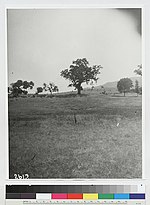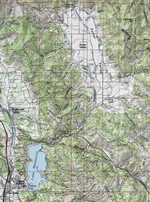Mendocino College
1973 establishments in CaliforniaCalifornia Community CollegesEducational institutions established in 1973Mendocino CollegeSchools accredited by the Western Association of Schools and Colleges ... and 3 more
Ukiah, CaliforniaUniversities and colleges in Mendocino County, CaliforniaUse mdy dates from January 2016

Mendocino College is a public community college in Ukiah, California. Mendocino College was founded in 1973. The main campus is located on 127 acres (0.51 km2) of hilltop land north of downtown Ukiah in the Ukiah valley. Currently there are about 4,000 students, 55 full-time faculty, and 200 adjunct faculty members. Three branches of the college exist, in Lakeport, Willits, and Fort Bragg
Excerpt from the Wikipedia article Mendocino College (License: CC BY-SA 3.0, Authors, Images).Mendocino College
Hensley Creek Road,
Geographical coordinates (GPS) Address Nearby Places Show on map
Geographical coordinates (GPS)
| Latitude | Longitude |
|---|---|
| N 39.189444444444 ° | E -123.22722222222 ° |
Address
Macmillan Hall
Hensley Creek Road
95482
California, United States
Open on Google Maps









